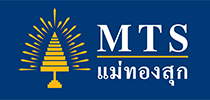


Finally, the Fed may see the start of the inflation trend it's been waiting for — and that could provide some reinforcement for markets that it's seriously on a path to raise interest rates two more times this year and several more next year.
The Fed has long targeted 2 percent inflation, but its favorite measure of inflation, the core personal consumption expenditures price index has stubbornly lagged, managing to hit that level just twice since April 2012. The last time it reached 2 percent was last March.
But core PCE, without food and energy, is expected to be up 0.2 percent in July, or an annual pace of 2 percent, according to Thomson Reuters. The PCE is reported with personal income and spending data being released Thursday at 8:30 a.m. ET.
"It does make it easier for the Fed to say this is why it's appropriate that we continue to normalize," said Michelle Girard, chief U.S. economist at NatWest Markets.
Girard expects core PCE to be at 2 percent again in August, and to peak at 2.1 percent in September. But while she sees a firmer trend, she says it should hold just above 2 percent for the rest of the year.
The Fed is expected to hike rates in September and in December, but the market has been debating what policymakers will do next year, despite their forecast for three rate hikes in 2019. Lagging inflation has been one factor in the argument made by some strategists and economists that the Fed could pause at some point in the next year.
Girard does not expect the Fed to keep to its 2019 forecast of three rate hikes, and she sees just two hikes next year as it gets closer to the neutral rate, or the interest rate level that it no longer believes is stimulative.
She said the slightly higher inflation level fits with Fed Chair Jerome Powell's comments last week that the Fed can continue on a gradual path, and that the economy is strong while inflation is not expected to get out of hand. "There's no reason for them to move at a quicker pace," she said.
Reference: CNBC
Read More: https://www.cnbc.com/
